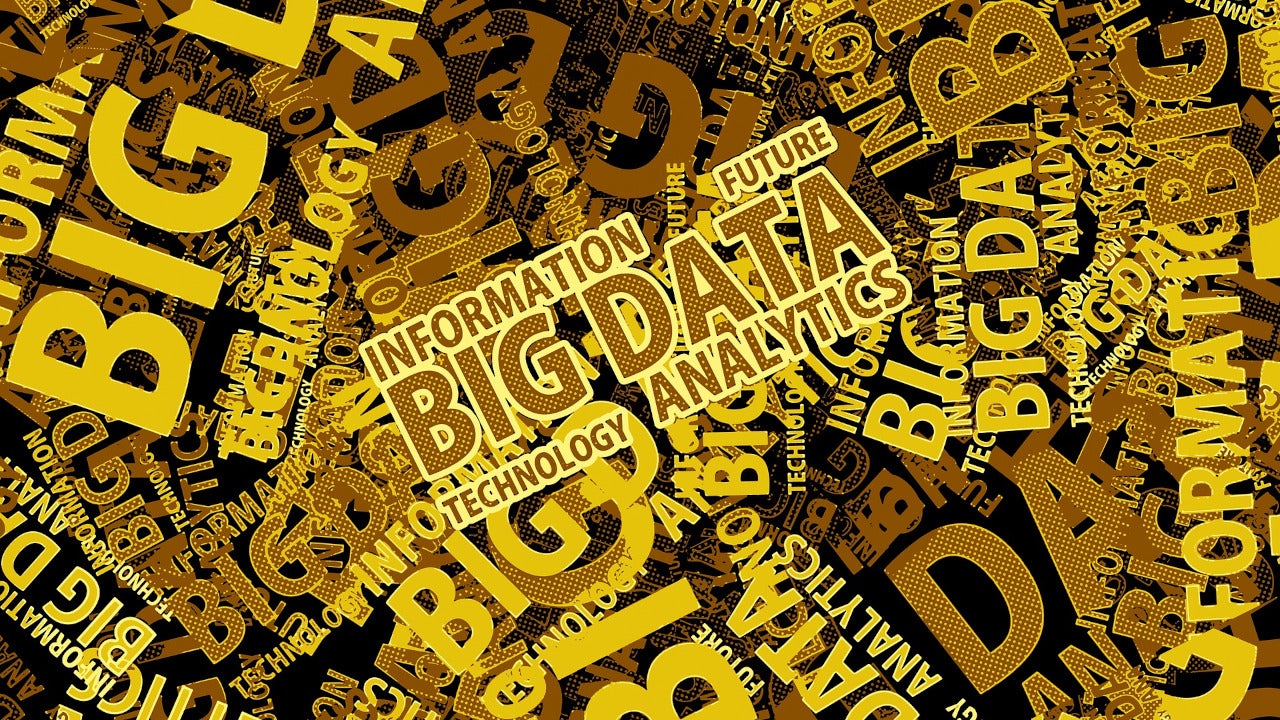
Verdict lists five of the most popular tweets on big data in Q1 2021 based on data from GlobalData’s Influencer Platform.
The top tweets were chosen from influencers as tracked by GlobalData’s Influencer Platform, which is based on a scientific process that works on pre-defined parameters. Influencers are selected after a deep analysis of the influencer’s relevance, network strength, engagement, and leading discussions on new and emerging trends.
Top tweets on big data in Q1 2021
1. Vala Afshar’s tweet on top enterprise technology investments in 2021
Vala Afshar, chief digital evangelist at Salesforce, shared his article on top technologies that would attract investments in 2021. The list of technologies includes cloud, security, data analytics, data integration, internet of things (IoT), artificial intelligence (AI), machine learning, blockchain, micro services, virtual and augmented reality, business as a platform, and voice recognition, among others.
The list is based on a report by MuleSoft, a software company based in the US. The report noted that innovation in information technology (IT) has taken center stage in the post pandemic world as business demands have increased due to remote working. Further, the importance of integration has increased to achieve digital transformation. The report also noted that most organisations are opting for Application Programming Interface (APIs) for new integration projects and how IT must meet the growing demands of business teams.
Top enterprise technology investments in 2021:
1 cloud
2 security
3 data analytics
4 data integration
5 Internet of things
6 AI machine learning
7 blockchain
8 micro services
9 virtual and augmented reality
10 business as a platform
11 voice recognition https://t.co/llEZSv8bEJ pic.twitter.com/XXnXU6OtGmHow well do you really know your competitors?
Access the most comprehensive Company Profiles on the market, powered by GlobalData. Save hours of research. Gain competitive edge.
 Company Profile – free sample
Company Profile – free sampleThank you!
Your download email will arrive shortly
Not ready to buy yet? Download a free sample
We are confident about the unique quality of our Company Profiles. However, we want you to make the most beneficial decision for your business, so we offer a free sample that you can download by submitting the below form
By GlobalData— Vala Afshar (@ValaAfshar) March 30, 2021
Username: Vala Afshar
Twitter Handle: @ValaAfshar
Retweets: 179
Likes: 448
2. Linda Grasso’s tweet on the importance of data science for a digital economy
Linda Grasso, COO of Digital Business Innovation, a consulting firm, shared an article from Jabil, a manufacturing services company, on how data science is crucial for a digital economy. The article discussed that with about 2.5 quintillion bytes of data created per day, businesses need to become more data driven. The article quotes Jabil’s 2018 trends survey, where 95% of the respondents expected that the digital transformation would accelerate in the future.
The article noted that data-driven companies will be winners in digital economy. It highlighted Jabil’s data science programme that enables its employees to gain expertise in areas such as business insight, data science, tools, and data management by partnering with local universities in the US, Singapore, China and Malaysia.
Data-driven companies will be the winners in the digital economy. Link >> https://t.co/8KmX6iSPSd @Jabil @antgrasso via @LindaGrass0 #DataScience #DigitalTransformation #Analytics #Innovation #BigData #Tech pic.twitter.com/Fm0HPXJtXA
— Linda Grasso (@LindaGrass0) February 1, 2021
Username: Linda Grasso
Twitter Handle: @LindaGrass0
Retweets: 96
Likes: 142
3. Antonio Grasso’s tweet on steps to harness analytics in business
Antonio Grasso, founder and CEO of Digital Business Innovation, shared an infographic to harness data solutions for businesses. The infographic mentions five-point solution of align, act, adjust, adopt, and adapt for delivering analytics and creating long-term value.
The first point, align, refers to aligning the leaders and the organisation around the mission and vision of digital transformation. Second is to initiate the act by creating value at small scale level and focus on immediate learnings and quick wins.
Third is to adjust the operating model, process, and technologies based on learnings, while the fourth is to adopt new data and technology at a large scale and engage with stakeholders into design thinking and strengthen the new behaviours. Lastly, adapt refers to utilising decision-making processes to boost the value of analytics.
Five actions that start with A and help your business leverage analytics to create long-term value in a data-driven digital world.#infographic by @antgrasso #Analytics #BigData #DigitalTransformation pic.twitter.com/hwcQ9pJExF
— Antonio Grasso (@antgrasso) February 19, 2021
Username: Antonio Grasso
Twitter Handle: @antgrasso
Retweets: 69
Likes: 106
4. Andreas Staub’s tweet on integration of AI and big data in smart cities
Andreas Staub, head of corporate development and digital transformation at Raiffeisen Group, a subsidiary of Raiffeisen Bank International, an Austrian bank, shared a research paper on the increased interference of data in our lives. Cities are increasingly using specialised technologies to solve societal, ecological and other issues concerning people and surroundings.
The paper suggests that the emergence of smart cities has highlighted the need to integrate big data, AI and sensors with IoT. It notes that big data and AI can help in improving the sustainability and liveability of smart cities, while ensuring the integration of culture and governance.
On #BigData #ArtificialIntelligence and #SmartCities#AI #IoT #Sustainability #fintech #Insurtech #culture @sallyeaves @jblefevre60 @HaroldSinnott @SpirosMargaris @Paula_Piccard @pierrepinna @floriansemle @pbucquet @ImMBM @KMcDTech @enilev @WhiteheartVichttps://t.co/jcz9sgMVdt pic.twitter.com/P6GAUj2lXD
— Andreas Staub (@andi_staub) March 23, 2021
Username: Andreas Staub
Twitter Handle: @andi_staub
Retweets: 51
Likes: 78
5. Michael Fisher’s tweet on eight Vs of big data
Michael Fisher, Jr., senior systems analyst at Whitcraft Group, an innovation-focused manufacturing company, shared an infographic on the eight Vs of big data including volume, value, veracity, visualisation, variety, velocity, viscosity, and virality.
Volume refers to amount of data being processed within a given time and whether one can find the necessary information they are looking for. Value is when you are able to find the most important data when needed, while veracity refers to the accuracy of the data. Visualisation and variety is when the data presented triggers a decision and is balanced.
Velocity deals with the speed with which the data is becoming available and whether opportunities evolve in real-time. Viscosity refers to the difficulty in using or integrating the data, while virality refers to how quickly the data can be dispersed and shared.
What are the #BigData 8 V's? {Infographic}#MachineLearning #DataScience #IoT #Cloud #Digital #Blockchain #FinTech #DL #ML #AI #Algorithms #Analytics #BI pic.twitter.com/8qwaPSiiYM
— Michael Fisher (@Fisher85M) March 24, 2021
Username: Michael Fisher
Twitter Handle: @Fisher85M
Retweets: 39
Likes: 56






Related Company Profiles
MuleSoft LLC
Raiffeisen Bank International AG
Salesforce Inc